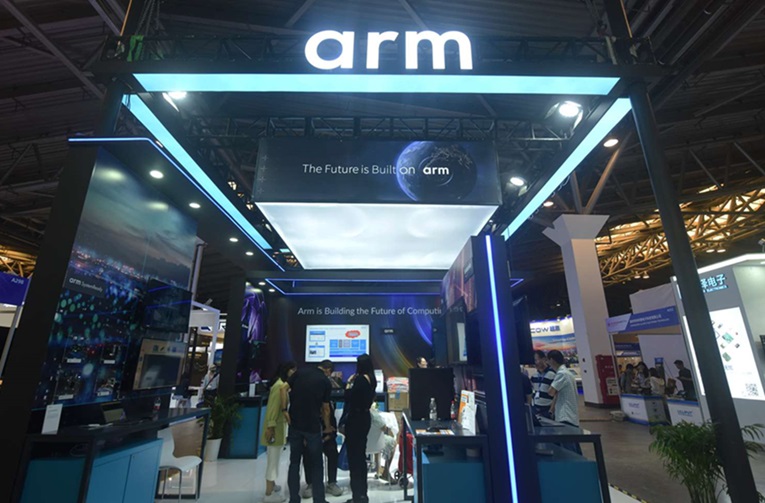British chip designer Arm has revealed its first-quarter results for fiscal year 2025, surpassing analysts’ expectations by a comfortable margin. Yet, despite this triumph, its shares took a nosedive, plunging more than 10% during extended trading hours due to lackluster guidance. This sharp drop comes on the heels of a stellar year where Arm’s stocks have impressively surged 96% by the close of Tuesday, buoyed by the ongoing artificial intelligence (AI) boom, which is anticipated to continue driving chip sales in the coming fiscal year.
Arm, with its near-monopoly on the market, supplies semiconductor design platforms to the majority of smartphones globally. The company made a grand entrance on the Nasdaq, stepping into the global AI race through an initial public offering in September 2023, raising a hefty $4.9 billion (€4.5 billion). However, the Japanese conglomerate SoftBank still retains a commanding 90% stake in Arm.
For the June quarter, Arm reported a revenue of $939 million (€867 million), marking a 39% year-on-year increase and comfortably outpacing the projected $905.4 million. However, this growth represents a slowdown from the previous quarter’s 47% surge. Earnings per share also exceeded expectations, registering at 40 US cents (€0.37), well above the anticipated 34 US cents.
The company has forecasted a revenue range of $3.8 billion (€3.5 billion) to $4.1 billion (€3.8 billion) for fiscal year 2025, indicating flat annual growth. This cautious outlook was seen by investors as a sign of wavering confidence in sustaining its rapid growth trajectory. Arm’s high valuations have been a point of contention, especially with a Price-to-Earnings (P/E) ratio of 497, significantly higher than Nvidia’s 68, which posted a 262% revenue growth in its April quarter. The Royalty unit’s performance also faltered, with segment revenue rising 17% year-on-year, down from a 37% growth rate in the previous quarter. This unit charges fees for each Arm-designed chip sold, and its growth was primarily driven by the increased adoption of Armv9 and the market’s overall recovery.
On a brighter note, licence and other revenue hit a record high, soaring by 72% from the previous year, thanks to customers’ long-term commitments to Arm’s “power-efficient” technology. The company added two more long-term licensees in the June quarter, bringing the total to 33. The Arm Flexible Access programme also saw benefits from its expansion into China, where it had previously been unavailable.
In a strategic pivot, Arm has ceased reporting the number of Arm-based chips shipped. CEO Rene Haas explained in a shareholder letter: “As we shift our focus to higher-value, lower-volume markets such as data center servers, AI accelerators, and smartphone applications processors, the number of chips reported as shipped is less representative of our performance, as the growth in royalty revenue is concentrated in a smaller number of chips.”
Arm’s energy-efficient computing solutions are in high demand, driven by the substantial energy needs of AI infrastructure built by tech giants. Arm claims that ten of the world’s largest hyperscalers use Arm-based chips in their data centers, asserting that it offers the world’s largest compute ecosystem, capable of accelerating data center chip development while meeting the performance and efficiency demands of AI applications.
(Source: The Guardian | CNBC)









